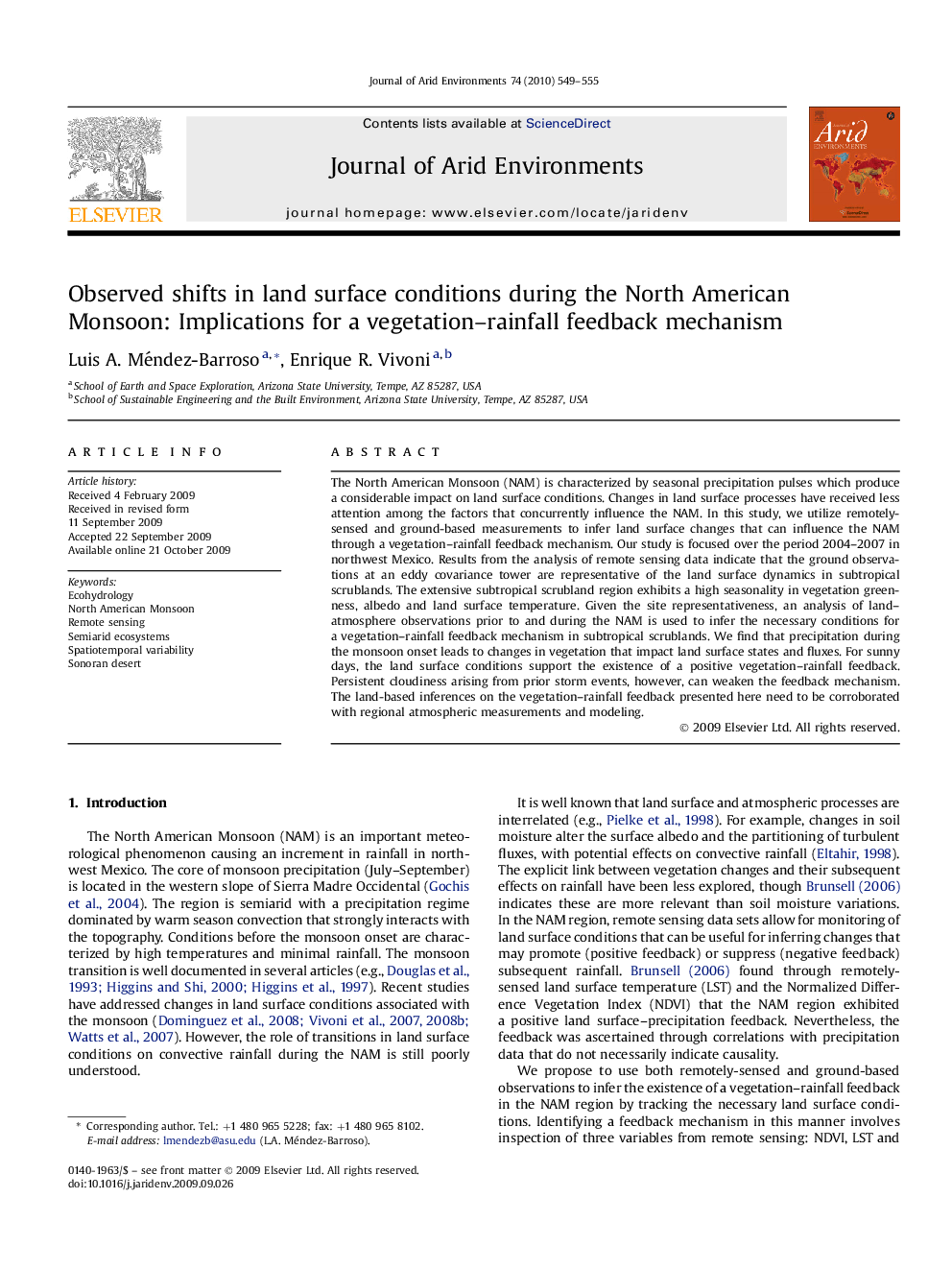| Article ID | Journal | Published Year | Pages | File Type |
|---|---|---|---|---|
| 4394228 | Journal of Arid Environments | 2010 | 7 Pages |
Abstract
The North American Monsoon (NAM) is characterized by seasonal precipitation pulses which produce a considerable impact on land surface conditions. Changes in land surface processes have received less attention among the factors that concurrently influence the NAM. In this study, we utilize remotely-sensed and ground-based measurements to infer land surface changes that can influence the NAM through a vegetation-rainfall feedback mechanism. Our study is focused over the period 2004-2007 in northwest Mexico. Results from the analysis of remote sensing data indicate that the ground observations at an eddy covariance tower are representative of the land surface dynamics in subtropical scrublands. The extensive subtropical scrubland region exhibits a high seasonality in vegetation greenness, albedo and land surface temperature. Given the site representativeness, an analysis of land-atmosphere observations prior to and during the NAM is used to infer the necessary conditions for a vegetation-rainfall feedback mechanism in subtropical scrublands. We find that precipitation during the monsoon onset leads to changes in vegetation that impact land surface states and fluxes. For sunny days, the land surface conditions support the existence of a positive vegetation-rainfall feedback. Persistent cloudiness arising from prior storm events, however, can weaken the feedback mechanism. The land-based inferences on the vegetation-rainfall feedback presented here need to be corroborated with regional atmospheric measurements and modeling.
Keywords
Related Topics
Physical Sciences and Engineering
Earth and Planetary Sciences
Earth-Surface Processes
Authors
Luis A. Méndez-Barroso, Enrique R. Vivoni,
